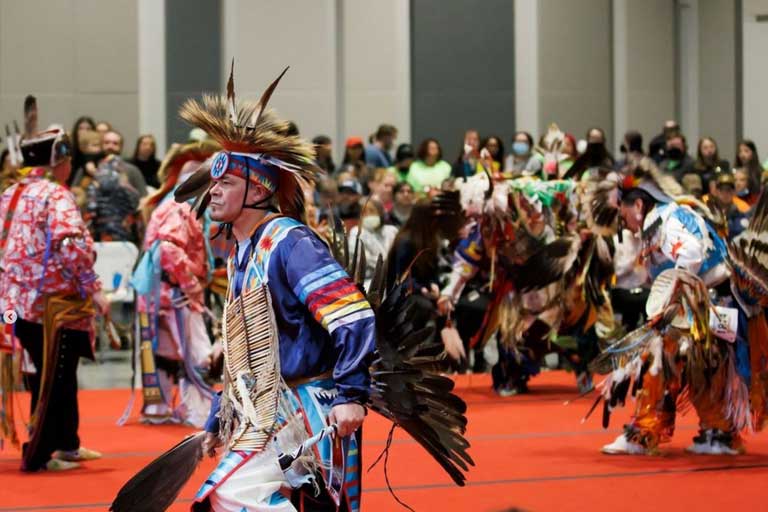The First Nations Educational and Cultural Center (FNECC) hosted the 10th annual Powwow in the Ray E. Cramer Marching Hundred Hall on April 9, the first in-person since the pandemic began. Juaquin Hamilton, a Sac and Fox Nation historical researcher who was the master of ceremonies for IU’s first virtual powwow in 2021, emceed this year’s powwow. According to Hamilton, it was one of the first in-person powwows he attended this year.
The Indiana University Annual Traditional Powwow attracted hundreds of visitors from across the country and boasted a line-up of nationally known dancers and singers. In addition, many of the dancers were from outside Indiana and traveled hundreds of miles to perform. In attendance were President Pamela Whitten, her first Powwow as IU president, and James Wimbush, vice president of diversity, equity, and multicultural Affairs. Both participated in the Grand Entrance along with FNECC Director Nicky Belle.
Performers of all ages participated, carrying on the traditions of their people as they represented them through their feathers and beadwork, their dance clothes, the songs they sang, and the styles in which they danced. The powwow is an important time when generations come together to share in dance and song and celebrate the diversity of contemporary Native American tribal identity.
In addition to the social dancing, vendors lined the hallways and offered items such as silver, turquoise, and bone jewelry and blankets, dolls, artwork, beaded purses, and more. Many of the items on display and for sale were handcrafted and took hours of work to create.
According to the FNECC website, the modern powwow and many styles of contemporary powwow dancing have their roots in the historic warrior societies of the Southern and Northern Plains. Over time, these dances, ceremonies, and gatherings have evolved from formal and tribal-based into modern-day intertribal celebrations of culture, dance, song, crafts, food, and pageantry held across the United States and Canada, in small towns and big cities. These quintessential social gatherings can occur anywhere – from community dance grounds to large arenas and convention centers.
For more information on the powwow, please visit the FNECC website. Additionally, please visit the Indiana Daily Student to view their “Photo Story” of the event.


